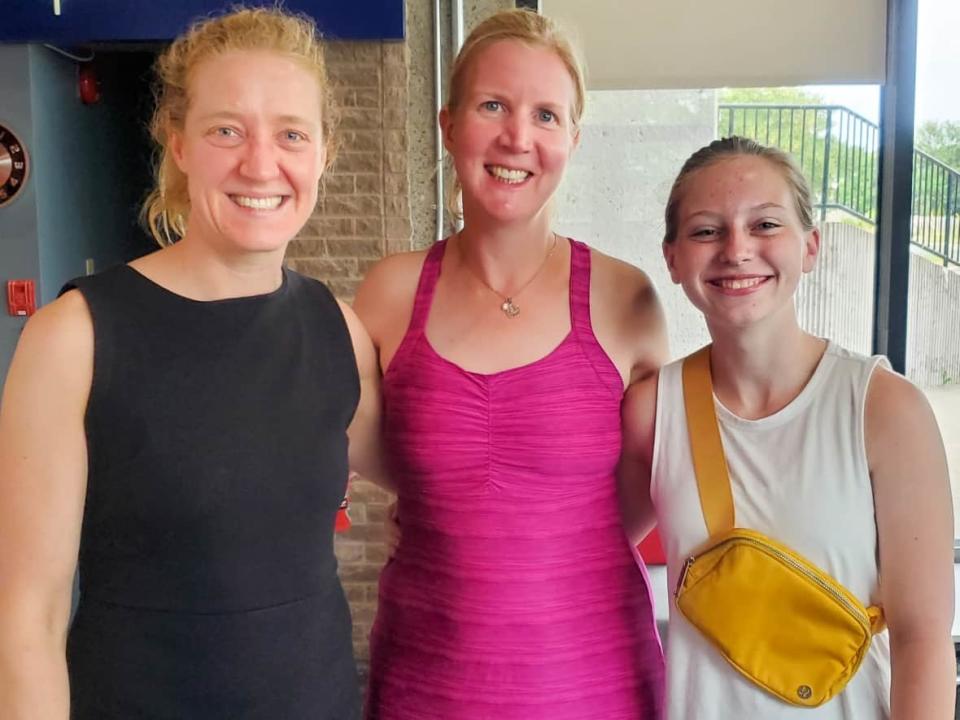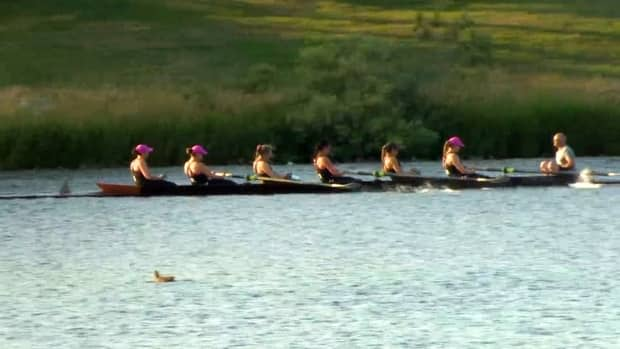'Girls can do anything they want to': Female rowers gear up to smash old regatta rules

Ava Bishop was only 10 when she started asking boathouse staff why she'd never be allowed to row the full length of Quidi Vidi Lake.
"Why can't I?" Bishop recalled indignantly asking, to anyone who'd listen. "Why aren't I allowed?"
"That's just the way it's always been done," they'd answer.
"I've always been vocal about that not being a good enough reason," Bishop, now 16, said Tuesday. "Girls can do absolutely anything they want to, and they shouldn't let anyone tell them otherwise."
Bishop is on one of four women's teams making history at the Royal St. John's Regatta this week, as the annual rowing competition sloughs off the limitations it's placed on female athletes since 1816.
Those teams will row the long course — all the way to the end of the lake and back. It's a race traditionally reserved for men, while women were confined to the half course, but the regatta committee decided earlier this year to end gender-based distances.
This year, all teams will have the opportunity to race the short course, which is 1.225 kilometres, and a long course, which 2.45 kilometres.
"I never understood why there would be two different distances for men and women. It didn't make sense to me," said Nancy Beaton, who's rowed the regatta for the past 11 years.
Beaton says the rule also fuelled discriminatory beliefs.
"If youth come into this sport and they're being told that women can only row half the distance that males do, that's something that becomes deeply ingrained without even realizing it," she said. "It's super-important to send that message, that anyone can do any distance, and you get to choose."

The evolution comes with strategic hurdles, though, she adds: training for a long course means pacing yourself.
"It's a totally different kind of racing," Beaton explained. Rowers have to slow down their stroke rate and keep an eye out for unfamiliar markers along the shore.
"The short course has always been a sprint: you give'r out, you give'r back," Bishop added. "I tried to do that the first time we ever went up to the full [race] and I died."
But it's not a challenge any of the regatta's female rowers ever thought they couldn't overcome, said veteran Connie Duffett.
"When we go down to the bottom of the pond and turn those buoys, the thought crosses our mind: we can do this as well," Duffett said. "We've got the strength. We've got the endurance."
With two women now leading the regatta committee, she adds, this year — 206 years after the first boats launched from the shore of Quidi Vidi Lake — felt like the right time to make the change.
And for Bishop, it'll mean realizing a dream she's spent nearly half her life pursuing.
"I love this sport with all my heart," Bishop said.
"Seeing the equality we need start to happen? It's amazing."

 Yahoo Sports
Yahoo Sports 
